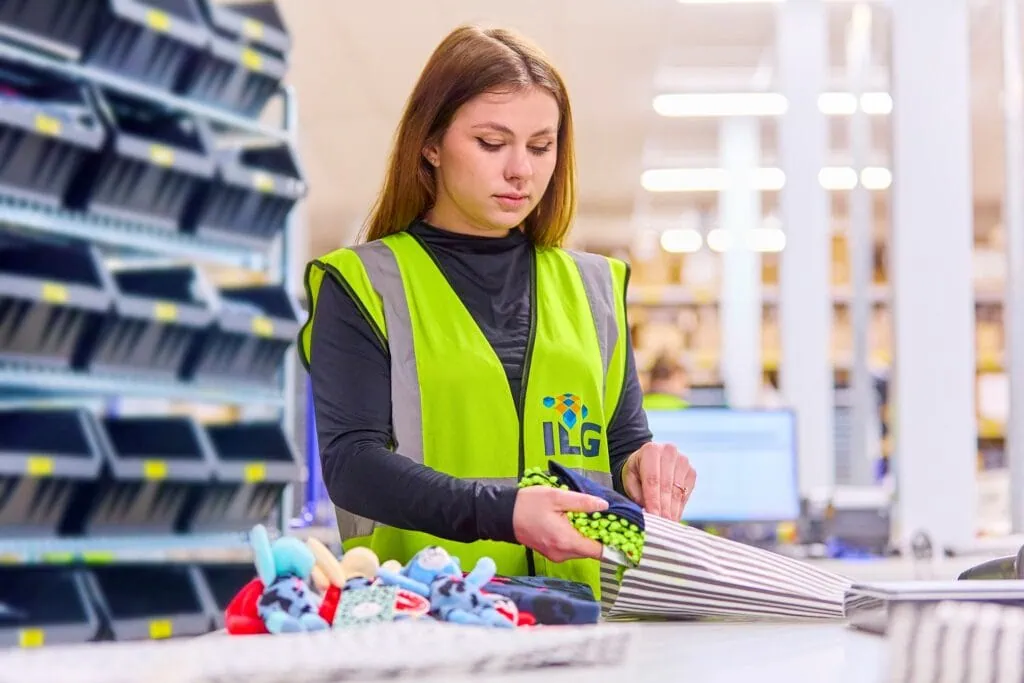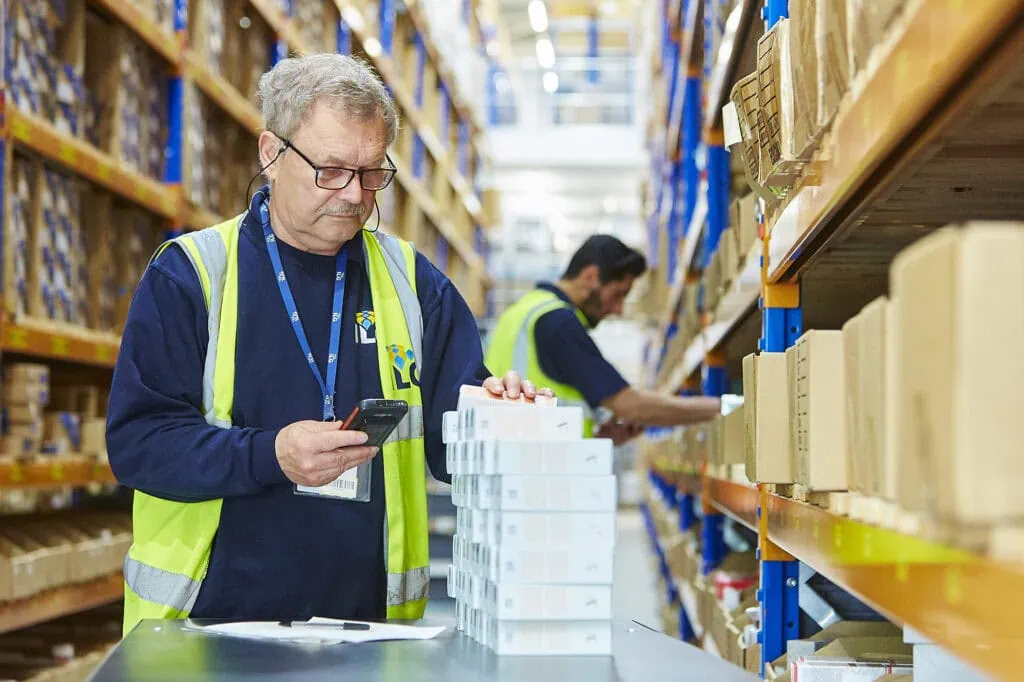
How to keep newly acquired Black Friday sales customers coming back for more
During Black Friday 2024, online shoppers in the US spent $10.8 billion, up 10.2% compared to 2023. Digging into where those sales come from, the majority of e-commerce brands see that a large share of those sales came from first-time buyers. Given that it costs around seven times more to acquire a new customer than to keep an existing one, the real opportunity isn’t just in attracting new shoppers but in turning them into loyal repeat customers.
Even during what is now consistently one of the busiest online retail periods of the year, customers have high expectations of the brands they buy from. A smooth, clear purchase and delivery process – from the moment they hit ‘Add to Cart’ – is not just desirable, but essential for repeat custom after Black Friday.
We have therefore put together our top retention tips to help e-commerce leaders nail their logistics and get the most out of their Black Friday Sales. If you are interested in learning more about enhancing your fulfillment and delivery processes for future peak periods, talk to ILG today.
1. Make your checkout process easy to find, follow and complete
For the sake of this article, let’s assume that you have a user on your website who has found an item they wish to purchase and have been enticed by the Black Friday deal you’re offering… what happens next is crucial to whether they’ll go on to become a long-term customer.
Even though this user is happy to go ahead with this purchase now, because they know your sale is too good to miss, a poor checkout experience has the potential to make or break their long-term perception of your brand.
A smooth checkout process should:
- Be obvious on the website, generally linked to from the top navigation. Users should not have to search around to find out where they should checkout.
- Keep it simple The fewer hoops your customers have to jump through, the better, especially during Back Friday when they’re juggling multiple checkouts in a single session. If your process does require multiple steps, a progress bar will help set user expectations and prevent frustration.
- Offer multiple options for payment and delivery. Giving users the autonomy to choose how they want to pay and whether they want to offer speed or price when it comes to delivery, helps them see that your brand is on their side. Find out how to avoid cart abandonment by partnering with a multicarrier delivery partner.
- Be transparent. Display the total cost (including taxes, deliveries and duties), hidden or unexpected costs create friction and buyer remorse and may prevent the customer from coming back or buying at all in the first place.
2. Provide a positive delivery process
As soon as your customer has completed their purchase, it’s important to reassure them that their order is in process. Communication is key.
Ask your users how they best like to be kept updated, whether it’s through email, SMS, or an app, and provide them with helpful updates along the way. The number of updates required will, of course, depend on the length of your expected delivery time but generally, we recommend notifications for:
- Completed purchase, with the estimated delivery date
- Delivery despatch notice
- Pre-delivery update (“Your delivery is arriving tomorrow between [times]”)
- Post-delivery update
When it comes to the actual delivery, speed and reliability shape trust. According to 2024 Shopify and Navar data, 72% of consumers say on-time delivery strongly influences their decision to buy again. Offer realistic shipping times during peak periods, Black Friday creates delivery chaos with delays and stockouts being common. When these are handled poorly, it can create distrust and reduce your chance of customer retention.
3. Delight customers with the unboxing experience
Packaging plays a huge role in how first-time customers perceive your brand. You have an unmissable opportunity here to impress with aesthetically pleasing, memorable and eco-friendly packaging – especially if you know that’s something that your customer base cares about.
Treat your packaging as a post-purchase marketing channel. Many e-commerce brands choose to ‘surprise and delight’ their customers with unexpected free gifts in their delivery (could be as simple as a packet of sweets or stickers), brand brochures or discount codes to encourage future purchases.
The holy grail of packaging is making customers want to capture ‘unboxing videos’ to share with their friends and social following. Not only does this move them immediately into the ‘brand advocate’ bucket, but it drives awareness of your brand and products in their social circle.
With Black Friday, however, there is a compromise to be made. Overcomplicated packaging can slow down your fulfillment processes at a pivotal, peak time – as well as damaging your bottom line.
4. Make the returns process straightforward
An influx in transactions during the busy Black Friday sales period will inevitably lead to an influx in returns. It’s important to remember that returns don’t always mean that a consumer is dissatisfied with your brand, just that the particular product wasn’t for them.
A poor returns process has the potential to turn a customer off your brand for good, which is why we always live by the principle that retailers should treat returns with as much diligence as the initial delivery. Our top tips for easy returns are using re-seal and re-use packaging, as well as providing users with hassle-free returns solutions such as instant refunds, return to locker or label-free options.
Offering free returns is a great way to build customer confidence, but during peak periods of expected high returns it can quickly eat into your margins. You could consider credit-based returns as a solution, for example, once the return has been processed you could offer a discount code to the customer for them to use if they shop again within a certain timeframe. It keeps them happy and encourages repeat business.
5. Offer helpful customer support
New users who have never bought from your company before are much more likely to have questions and need support along the way. Providing helpful and personalized customer support can therefore play a significant role in whether they wish to purchase from you again. A survey by HubSpot found that 90% of consumers rate a response within 10 minutes as being “very important” when they have a customer service question**.
Especially in the run-up to the Black Friday madness, we recommend that you take some time to question whether your customer support options are as visible as they could be across your website, social platforms and emails.
Don’t have time to manage this in-house during the busiest time of the year? There are plenty of tools out there, like Zendesk and Gorgias that help to optimize and automate your customer service processes.
6. Plan a post-Black Friday marketing retention strategy
A well-executed email strategy is one of the most powerful tools in the e-commerce toolkit for retaining first-time customers. Sending out tailored, engaging emails based on your different customer segments and behavior is a great way to keep the conversation going with your new customers long after Black Friday.
Use loyalty or rewards programs to turn first-time buyers into brand advocates. Offer an option to join your loyalty or rewards program when they’re completing their purchase to create a tangible incentive to return once Black Friday is over. This could look like exclusive discounts or early access and will hopefully entice new customers to return.
Fulfillment to support your Black Friday sales and beyond
Looking for a long-term fulfillment partner to help streamline your peak sales periods going forwards? Find out more about our outsourced order fulfillment and global delivery services.
This article has been written in collaboration with Emily Power, Strategy Director at Reload Media, who shares our enthusiasm for growing flourishing e-commerce brands.
**https://blog.edesk.com/resources/why-your-black-friday-customers-never-come-back/
Contact Us
More insights >
Top Social Commerce Tips to Boost Peak Sales
Discover the social commerce strategies that drive Peak Season sales. Read our practical tips for growing, founder-led brands.
Understanding MOQ and its Impact on Your Supply Chain Strategy
Understanding MOQ is critical for your business, and this guide will tell you all you need to know.

